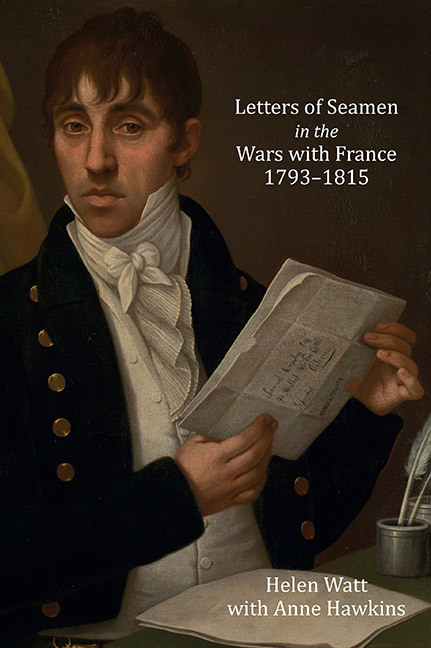Book contents
- Frontmatter
- Dedication
- Contents
- List of Illustrations and Tables
- Foreword
- Preface
- Acknowledgements
- Editorial Conventions
- List of Abbreviations
- Introduction
- Part 1 Thus Dear Father passes the life of a Tar’: Letters of Seamen, 1793–1815
- The Letters A1–194
- Part 2 A great Disturbance among the Fleet’: Letters, Mostly Intercepted, to and from Seamen During the Mutinies in the Royal Navy, 1797
- Letters B1–61
- Conclusion
- Appendix I Biographies
- Appendix II Select Ships Involved in the Mutinies in the Royal Navy, 1797
- Bibliography
- Index
Appendix II - Select Ships Involved in the Mutinies in the Royal Navy, 1797
Published online by Cambridge University Press: 26 May 2021
- Frontmatter
- Dedication
- Contents
- List of Illustrations and Tables
- Foreword
- Preface
- Acknowledgements
- Editorial Conventions
- List of Abbreviations
- Introduction
- Part 1 Thus Dear Father passes the life of a Tar’: Letters of Seamen, 1793–1815
- The Letters A1–194
- Part 2 A great Disturbance among the Fleet’: Letters, Mostly Intercepted, to and from Seamen During the Mutinies in the Royal Navy, 1797
- Letters B1–61
- Conclusion
- Appendix I Biographies
- Appendix II Select Ships Involved in the Mutinies in the Royal Navy, 1797
- Bibliography
- Index
Summary
Key: (N) Ship at the Nore, under the command of Vice-Admiral Charles Buckner, Port Admiral at Sheerness
(NS) Ship in the North Sea Squadron, under the command of Admiral Adam Duncan
(O) Other
Adamant (50) (NS); see Nassau (64)
Agamemnon (64) (NS); see Leopard (50)
Anson (44) (O); see Galatea (32)
Ardent (64) (NS); see Leopard (50)
Artois (38) (O); see Galatea (32)
Belliqueux (64) (NS) (A48, A51; B9–11, B14, B21–3, B33–4, B44; mentioned B40); when discussing the outbreak of mutiny among the ships of the North Sea Squadron, Gill gave a prominent role to Belliqueux (64), saying that ‘the defection of the Belliqueux was indeed the signal for a general mutiny’. Nevertheless, he then had difficulty in giving precise details of the sequence of ensuing events, discussing at some length the exact dates on which each ship in the squadron joined the mutiny. He also suggested that, for some reason, perhaps because acting in conjunction with Repulse (64) and Monmouth (64), there was a delay between Belliqueux (64) joining the mutiny and returning to Yarmouth. From the eight (or possibly nine) letters written by seamen on board Belliqueux (64), a clearer picture of events on that ship begins to emerge. On 27 May, all but two of the ships in the squadron sailed from Yarmouth, but then anchored not far out of harbour. On the next evening, the signal was given to get under way again, but Belliqueux (64) waited before doing so, because of a disagreement with the crews of Standard (64) and Lion (64), not because of an agreement with Repulse (64) and Monmouth (64) as supposed by Gill. Although the evidence as to which ship gave the three cheers, a signal to mutiny, to which ship first, is conflicting; Belliqueux (64) does not appear to have acted alone in starting the mutiny among the squadron moored off Yarmouth, but she, Standard (64) and Lion (64) agreed to do so together. It appears that Standard (64) and Lion (64) turned back for Yarmouth first, followed by Belliqueux (64), the crew taking charge of the ship on 29 May.
- Type
- Chapter
- Information
- Letters of Seamen in the Wars with France, 1793-1815 , pp. 558 - 574Publisher: Boydell & BrewerPrint publication year: 2014

